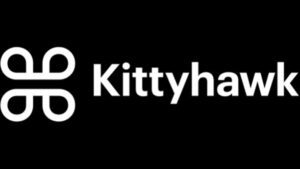The final rule was published last week, and the elimination of the network requirement for Remote ID has been both lauded and criticized. Drone industry thought leader and Kittyhawk CEO Jonathan Hegranes has written a thoughtful response to the new rule.
Kittyhawk has also published a whitepaper on Remote ID, providing a “deep dive” into the options.
While the originally published Notice of Proposed Rulemaking (NPRM) on Remote ID would have included both broadcast and network methods of passing location information, the final rule eliminated the network requirement for Remote ID.
Now, the FAA allows for 3 ways of operating under Remote ID rules. See the image below, or reference the FAA website here for an overview.
Hegranes writes that while the Remote ID rule does help to form a foundation for drone integration, the drone industry needs to continue to innovate on means of compliance.
“While previously indicating it would accept two methods of relaying identity and location information, broadcast and network, the final rules eliminated the network option,” Hegranes writes. “A “cohort” of drone industry companies (which Kittyhawk was not part of) informed the FAA how network or Internet-based RID would and should work. “The cohort identified several challenges with implementing the network requirements” wrote the FAA. Essentially saying it was too hard.”
Hegranes points out, however, that the elimination of the network requirement from the Remote ID rule doesn’t necessarily limit the industry.
In its final rule, the FAA states “The final rule establishes minimum performance requirements describing the desired outcomes, goals, and results for remote identification without establishing a specific means or process.” They later state that anyone can create a means of compliance. So what some may see as a stringent set of rules, we see as a license to innovate and create advantages for our enterprise customers and recreational pilots alike.
Kittyhawk’s experience with the crowdsourcing features they’ve introduced as part of the B4UFly App, Hegranes says, shows that drone pilots are accustomed to using simple web-based tools to communicate with other pilots and with authorities – which is the pont of the regulation.
“So we will continue to build compliance and airspace solutions that integrate from all data sources be they broadcast, network, programmatic or other while also taking advantage of the enhanced security, flexibility and simplicity that web tools enable,” Hegranes writes. “It’s our belief that integrated solutions will provide drone operations with the redundancy of systems that is the bedrock of traditional aviation theory and practice around the world.”
Miriam McNabb is the Editor-in-Chief of DRONELIFE and CEO of JobForDrones, a professional drone services marketplace, and a fascinated observer of the emerging drone industry and the regulatory environment for drones. Miriam has penned over 3,000 articles focused on the commercial drone space and is an international speaker and recognized figure in the industry. Miriam has a degree from the University of Chicago and over 20 years of experience in high tech sales and marketing for new technologies.
For drone industry consulting or writing, Email Miriam.
TWITTER:@spaldingbarker
Subscribe to DroneLife here.
